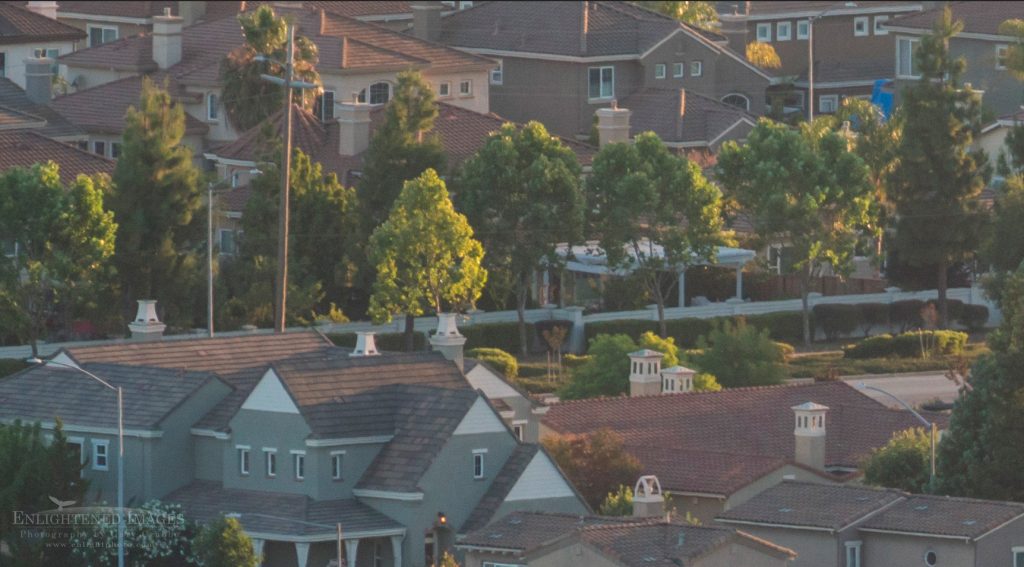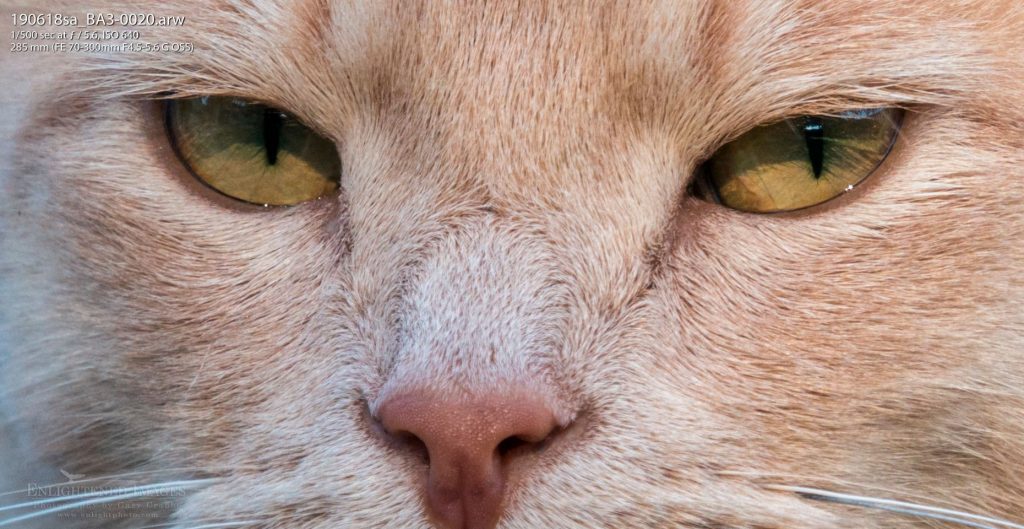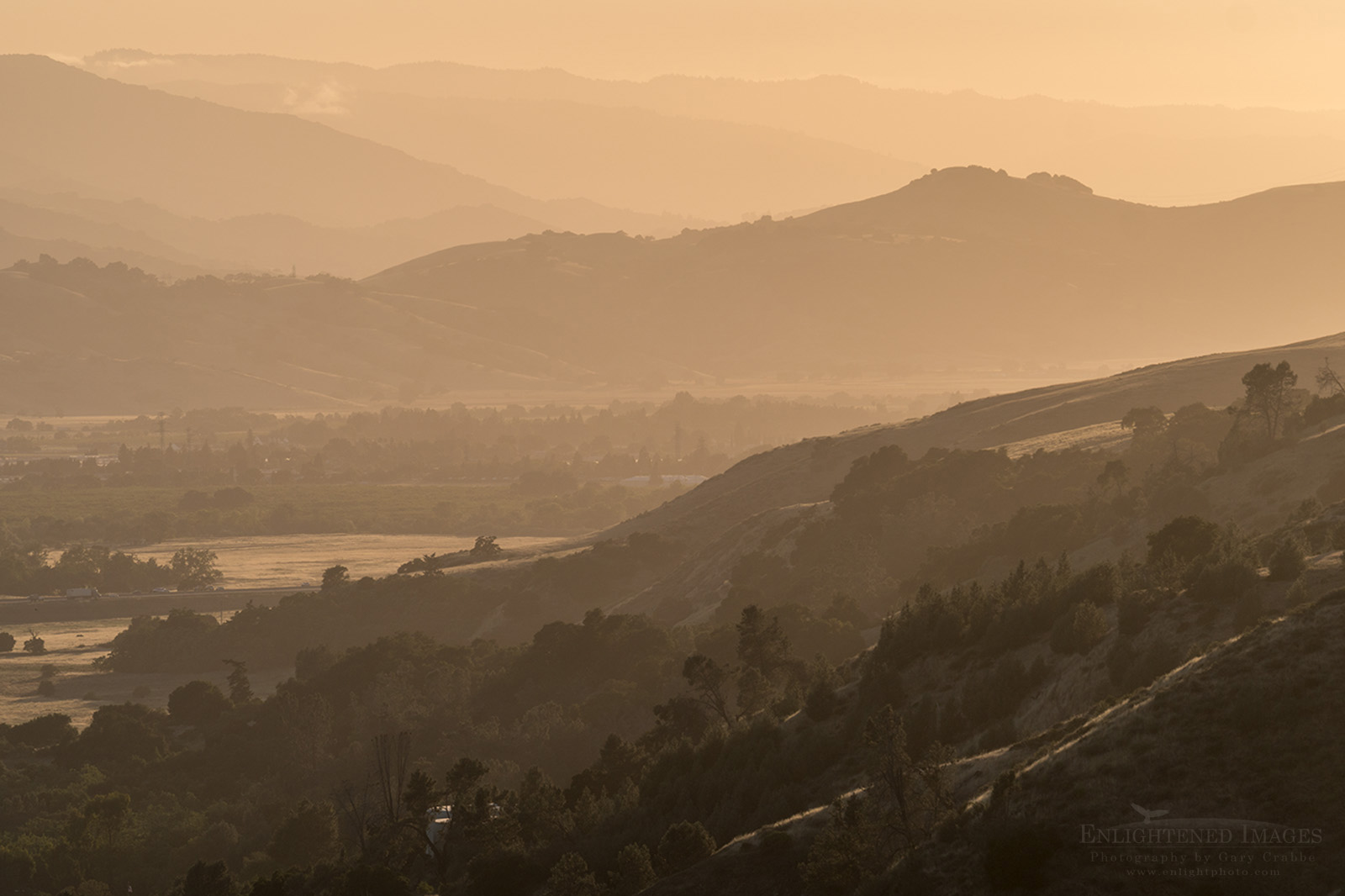
My first shoot testing out my new Sony FE 70-300mm f/4.5-5.6 G OSS Lens
Photo: (Above) View from Rosendin Park at sunset from Morgan Hill, Santa Clara County, California. 170mm 1/500s at f/8.0 ISO 100 *Click here to see larger.
You may think that as a multi-decade professional photographer, buying a new lens might be something as easy as heading out to the grocery store to pick up a dozen eggs.
I’ve always believed good photographers can make great pictures even with the simplest of equipment. I’m decidedly not a gearhead; my camera bodies and lenses are a long-term investment. So last week when I got a new lens for my Sony A6300, it was a well-considered decision to purchase the Sony FE 70-300mm G OSS lens ($1,200 USD).
THE REASON:

Photo: Rosendin Park, Morgan Hill, Santa Clara County, California. 70mm 1/250s at f/8.0 ISO 400 *Click image to see larger.
Over the last number of years, I’ve enjoyed using smaller, lighter equipment for some of my work. Folks who follow my newsletters and blog posts may recall the primary reason I purchased the Sony A6300 was to use as a hiking and tourist camera because I no longer wanted to deal with the excessive weight of my backpack fully-loaded with my professional Nikon gear.
For these last couple years, I was hiking with my A6300 using only a single lens: a Sony E PZV18-105mm f/4 G OSS. ($600 USD) This has kept my gear weight to only a few pounds and is able to fit in a small chest pouch while still easily achieving professional-quality results.
What I miss most about this setup was not having access to the longer reach of my Nikon telephoto lenses — even though the crop sensor on the 24 MP A6300 still gives an approximate 160mm focal length — this still falls far short of the telephoto reach I have with my Nikon 80-400mm.
For hiking needs, I considered purchase factors of weight, focal length, and image quality, along with knowing I will be carrying this lens around for many miles at a time.
THE OPTIONS:
I decided on the 70-300mm lens based on the size and cost as well as reports regarding image quality. With a 72mm-diameter lens, I was hoping it would prove itself capable of creating good quality images.
I previously checked out the Sony E 55-210 f/4.5-6.3 OSS. ($350 USD) – This is a cheap (inexpensive) small-diameter consumer-grade lens that despite its small size and weight simply lacks any professional-level image quality. As for the Sony FE 70-200mm f/4 G OSS ($1500 USD) or f/2.8 GM OSS ($2,600 USD) lenses: I’ve heard great reports about the F4 lens which was a strong contender. It is about the same weight the 70-300mm but just a bit larger and not quite a backpacking type lens but with probably slightly better glass and image quality. In order to get the extended 300mm reach, I would have to invest in a currently non-existent lens-compatible 1.4x teleconverter. The F2.8 lens is fantastic but far too heavy and more costly than what I wanted to spend on a hiking lens. The same held true for the impressive Sony FE 100-400mm f/4.5-5.6 GM OSS ($2,400 USD) I had also previously tried the Sony 24-240mm f/3.5-6.3 OSS ($1,000 USD) prior to the purchase of my 18-105mm lens. It would’ve been a fantastic all-around travel lens but I was quite disappointed with the poor image quality at each end of the zoom range.
FIRST USE:

Photo: Morning fog burns off over rural ridge in Morgan Hill, Santa Clara County, California. 242mm 1/1000s at f/8.0 ISO 100. *Click image to see larger.
The first thing I noticed when purchasing this lens was it didn’t come with a lens mount collar. Using a small lightweight travel tripod, I was concerned the lens — especially when extended — would put a strain on the small ballhead I was using. Luckily, I was able to find a custom lens collar on Amazon or eBay for about $40. While definitely helping to stabilize the camera while on a tripod, the big problem then became the very tight fit for my fingers between the lens flange and the camera grip on the A6300 body while trying to use the lens handheld.
I took a short hike with a friend and just started taking pictures. Although it doesn’t focus quickly, and even slower in lower light, I was impressed by the initial non-technical and non-scientific results. The color was good, weight and balance were fine, flare wasn’t bad, and the sharpness was impressive. Like my other Sony lens, I knew the sweet spot for sharpness, including corner-to-corner sharpness would definitely benefit from shooting at f/8. The most notable issue I found from this first outing was some significant chromatic aberration, although it was corrected fairly well using Adobe Lightroom.
The only other significant factor I’ve yet to solve is to find a good solution for carrying this lens while playing tourist, trying to stay as close to my single chest pouch ease-of-use and size while not screaming “This is a camera bag; Take me.”
Overall, this is proving to be a good choice of a lens for what I wanted and needed. Now I’m looking forward to putting this lens through some more rigorous real-world travel and hiking trips.
Click on any of the pictures below to see larger versions.
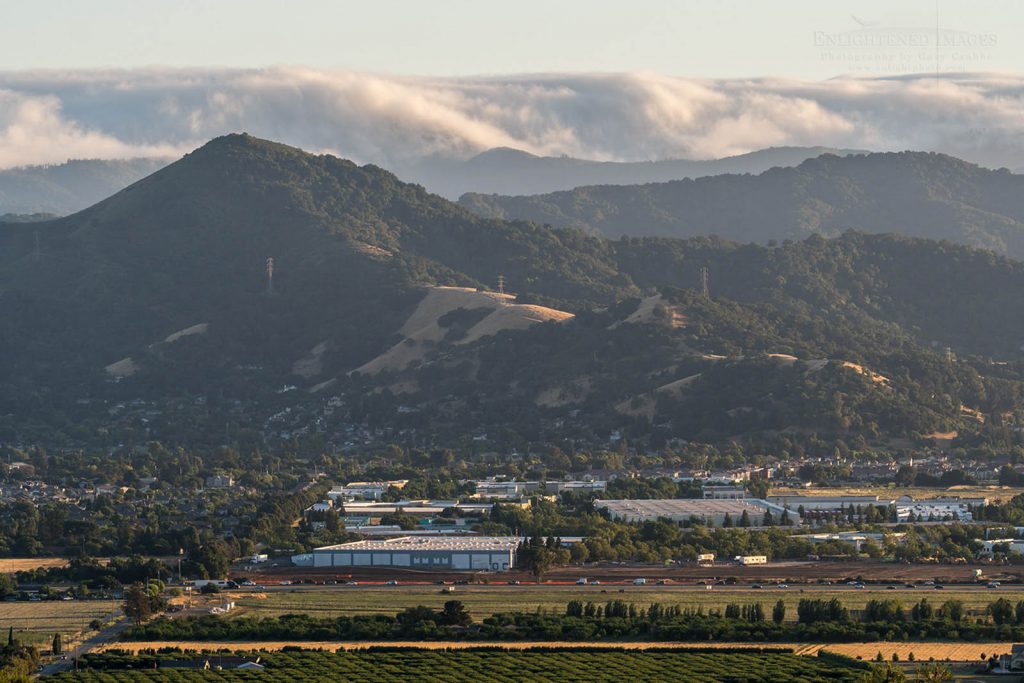
Photo: Fog rolling in over Morgan Hill, Santa Clara County, California. 128mm 1/250s at f/8.0 ISO 200 *Click image to see larger.
–
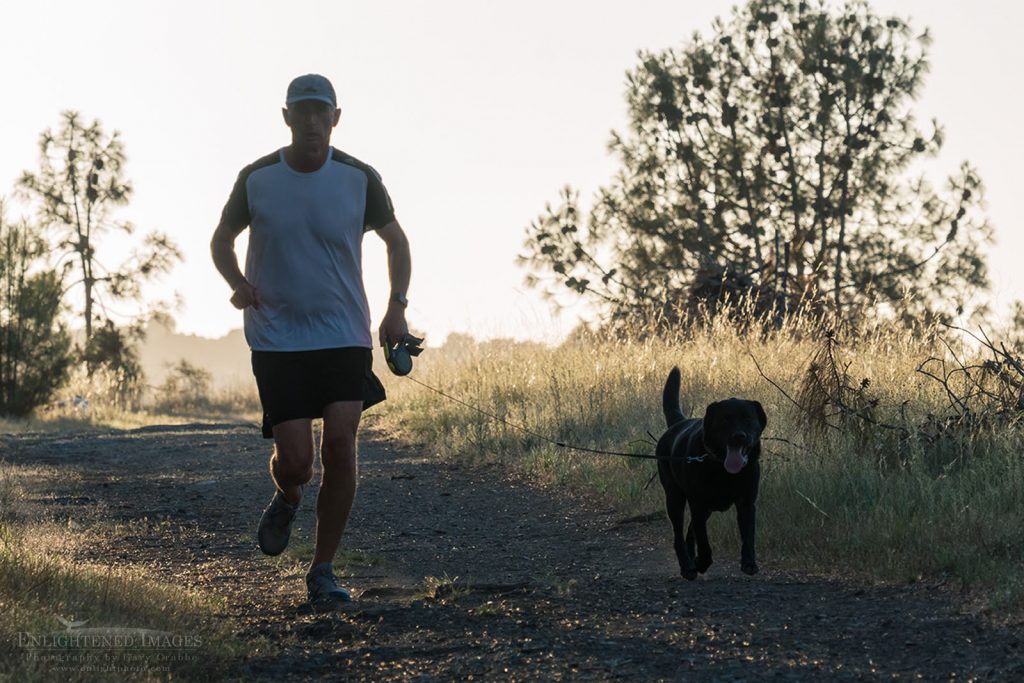
Photo: Jogger and dog running on trail in Rosendin Park, Morgan Hill, Santa Clara County, California. 174mm 1/640s at f/8.0 ISO 400 *Click image to see larger.
–

Photo: Suburban homes in community neighborhood, Morgan Hill, Santa Clara County, California. 300mm 1/160s at f/8.0 ISO 200 *Click to see larger.
*Click image see 100% corner detail.
–

Photo: Milo – with his Grumpy Cat impression. 285mm 1/500s at f/5.6 ISO 640 *Click image to see larger.
*Click image to see 100% detail.
–

Photo: 12-frame handheld panorama of morning fog burning off over rural ridge in Morgan Hill, Santa Clara County, California. 212mm 1/800s at f/8.0 ISO 640 *Click image to see larger.
![]()
—
 Gary Crabbe is an award-winning commercial and editorial outdoor travel photographer and author based out of the San Francisco Bay Area, California. He has seven published books on California to his credit, including “Photographing California; v1-North”, which won the prestigious 2013 IBPA Benjamin Franklin Gold Medal award as Best Regional title. His client and publication credits include the National Geographic Society, the New York Times, Forbes Magazine, TIME, The North Face, Subaru, L.L. Bean, Victoria’s Secret, Sunset Magazine, The Nature Conservancy, and many more. Gary is also a photography instructor and consultant, offering both public and private photo workshops. He also works occasionally as a professional freelance Photo Editor.
Gary Crabbe is an award-winning commercial and editorial outdoor travel photographer and author based out of the San Francisco Bay Area, California. He has seven published books on California to his credit, including “Photographing California; v1-North”, which won the prestigious 2013 IBPA Benjamin Franklin Gold Medal award as Best Regional title. His client and publication credits include the National Geographic Society, the New York Times, Forbes Magazine, TIME, The North Face, Subaru, L.L. Bean, Victoria’s Secret, Sunset Magazine, The Nature Conservancy, and many more. Gary is also a photography instructor and consultant, offering both public and private photo workshops. He also works occasionally as a professional freelance Photo Editor.
Follow me on FACEBOOK – INSTAGRAM – TWITTER
*** If you like this post, I would greatly appreciate it if you’d consider sharing this with your friends using one of the Social Media sharing buttons located at the top or bottom of this post. You can also sign up to receive free updates by email when future posts are made to this blog.
![]()
—


